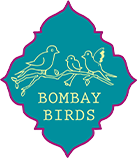The Importance of Block Printing in the Indian Rajasthan Textile Industry
The art of block printing has a long and venerable tradition in India, dating back to the 12th century. In the 17th century, the northern states of India experienced a revival of this art form, which arose in response to its growing popularity during colonization.
Today, in the 21st century, Indian artisans continue this fine craftsmanship and bring a part of their heritage and artistry into our homes. This tradition is not only a testament to artistic skill, but also a central part of the conscious luxury and slow fashion principles that our luxurious, independent Swiss brand Bombay Birds stands for.
The process of block printing
The artisans' main tools are simple blocks of hand-bent teak with handles. The process of block cutting requires a great deal of skill to achieve the desired design as precisely as possible. First, the motif is sketched freehand on tracing paper and then transferred to the planed wood. The design is then carved about one centimeter deep. Each block has two or three cylindrical holes that allow air to pass through and help squeeze out excess paint. A separate block is used for each color.
Newly manufactured blocks are soaked in oil for about ten days to soften the wood grain.
The printing process
In the next step, the fabric to be printed is stretched over a printing table and secured with small pins. When the block is placed on top, the printer slaps it firmly onto the fabric, causing the pattern to appear in reverse. A marked point on the block serves as a guide for repeating the print to ensure a homogenous design. A highly skilled outline printer guides this process. For multi-colored patterns, additional printers use their own blocks to precisely complement the colors.
The estimate of the number of blocks needed to print a single design is impressive. Since each color has its own block, each component of the design also has a separate block. Depending on the complexity, color, size and order, artists use multiple sets of blocks.
The completion of the printing process
After printing, the fabric is steamed and then dried in the hot Rajasthan sun. This fixes the natural dyes without the use of chemicals and ensures a high-quality, eco-friendly final product.
In a world where fast fashion reigns supreme, our brand Bombay Birds values the art and tradition of block printing as part of our commitment to conscious luxury and slow fashion. By supporting these techniques, we not only help preserve India's cultural heritage but also offer our customers fabrics of the highest quality and timeless elegance.


